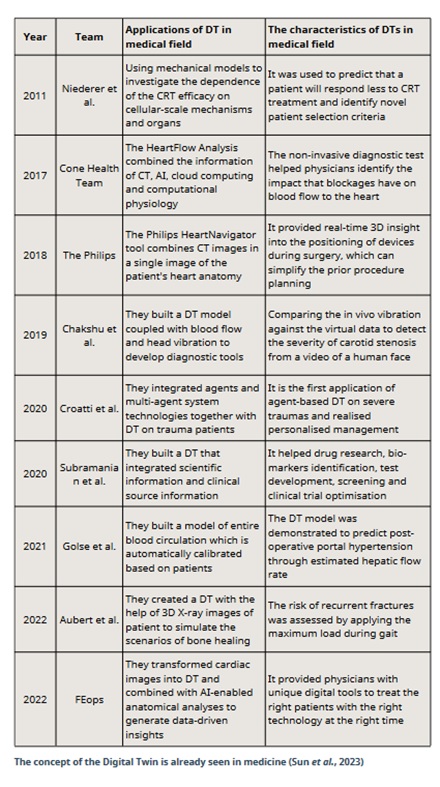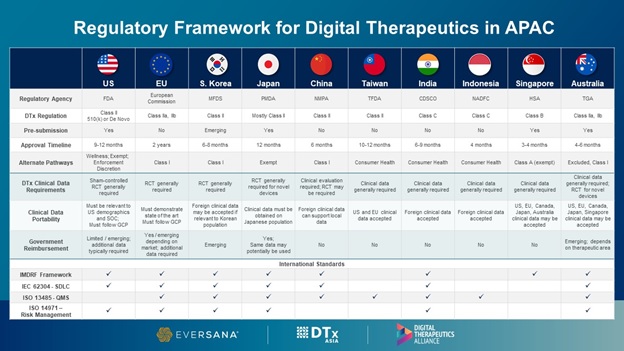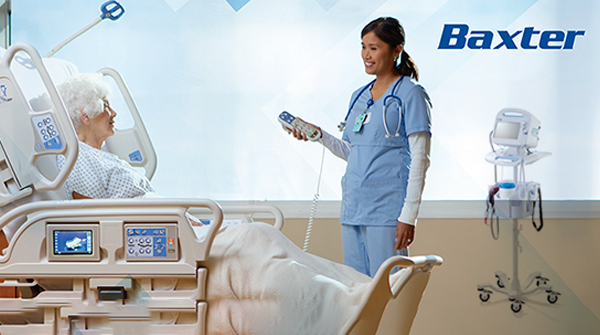Swire Consulting

About: Simon Waslander - Strategic Engagement Partner
Simon is a Strategic Engagement Partner at Swire Consulting, focused on establishing links from within his deep science networks. His multifaceted expertise drives him to explore intersections between scientific advancement, capital markets, and healthcare business opportunities, shaping the future of both healthcare and consulting landscapes. Swire Consulting provides various services to healthcare companies seeking to capitalize on this once-in-a-generation opportunity.
Question 1: To set the stage, could you provide a concise overview of what a Digital Health Twin is and help us understand why it is considered the final frontier in revolutionizing the field of medicine?
Sure, in its most basic abstraction, a digital twin is an “in-silico” simulation of a person’s health status. So an accurate computer simulation of any individual’s detailed health status. This is a very complex topic which we will discuss in more detail in the follow-up questions.
But Digital Twins are set to revolutionize every facet of healthcare. Firstly, it paves the way for true highly Personalized Precision Medicine. For all of history, medicine has been quite a hit-and-miss type undertaking. But with Digital Twins we could in theory simulate precisely for example what medication, in what dosing regimen, and for what treatment length any given patient needs to take, before actually starting treatment. The result is the dawn of the personalized medicine era, where every patient will be treated in an extremely hand-tailored fashion, but in an automated manner and at a level that an unaided human practitioner will find hard to cope with. Secondly, as an extension, this opens the way for Predictive Analytics, both in the short acute sense, for example detecting a heart attack 1 day before it occurs allowing for treatment and prevention of a potentially catastrophic disease event. Saving both monetary resources and indescribable amounts of human suffering. Also, long-term predictions of for example specific disease risks decades before they were to occur, allowing ample time for tailored and appropriate lifestyle changes. Lastly, it will usher in a new era for Drug Discovery as these simulations will indicate which of the hundreds of thousands of real-life factors are influencing treatment efficacy or side effects. Also, allowing for in-silico simulations of patients using a never-tested substance, increasing both the safety and effectiveness of a potentially new life-saving treatment.
Just let what I mentioned sink in, and try to imagine what this will mean not just for the field of medicine, but for society at large. Hence why I see this technological mega-trend as the final frontier in medicine.
Question 2: Can you elaborate on the transformative potential of Digital Health Twins and how they represent the final frontier in reshaping medical practices?
From early detection of disease risk, decades before it was to occur, to acute predictions of potentially life-altering disease events that could lead to acute prevention, to precisely tailored medical treatment options for any individual, decreasing side effects and augmenting treatment efficacy to the potential of discovering novel existing pharmaceutical combinations and drug repurposing, and lastly the development of new molecules and treatments that glean insights from real-life data.
Indeed each factor mentioned is transformative in its sense. Together it is a truly revolutionary potential.
Question 3: How do advanced technologies such as machine learning and IoT form the backbone of Digital Health Twins, and what challenges are associated with their seamless integration?
I think at this moment, the cost aspect associated with 24/7 continuous clinical-grade IoT sensors is the main impediment to the large-scale implementation of this strategic vision. We have seen clinical-grade sensor technologies enter the market recently over the last 24 months and various reviews in journals such as Nature and Cell have covered the potential in a very adequate sense.
In certain clinical senses such as high-risk patient populations, highly expensive sub-groups, or certain private clinic settings, it is already quite possible to mobilize the IoT sensor technologies for the data-gathering part of creating a Digital Twin.
Regarding ML algorithms, digital infrastructure, dashboarding, and visualization, i.e. the digital infrastructure. This is more than ready already. Various open-source tools are available, from platforms such as CureDAO, to AI Large-Language Models such as MediTron-70B, to coding automation such DeepSeek Coder. All these parts are already available today.
Now, we just have to wait a little bit for the world’s brilliant engineering minds to find a way to reduce IoT sensor costs, for this revolution to take off and disseminate to all aspects of clinical practice.
Question 4: In the context of Digital Health Twins, how can healthcare systems effectively address the integration of diverse patient data sources while ensuring robust privacy measures?
This is a very good question. In Europe especially, there are very stringent privacy laws and requirements. Protocols such as GDPR, bank-level 256 encryption, running everything on HIPPA-compliant servers, and blockchain technology.
These are some of the tools available for professionals seeking to enter this exciting space. Also, don’t let the list intimidate anyone, as many platforms, both the paid version and even the open source one have these parts already integrated into them.
Question 5: Could you discuss the significance of interoperability and the role of standards in fostering collaboration among different healthcare systems within the Digital Health Twin framework?
Well, back in the stone age when I was just learning about this field, I learned about endeavors such as the EQUATOR Group that have created universal checklists for the creation of predictive analytics algorithms in healthcare. This a completely scientist/industry-led undertaking.
In the end, it is going to probably be a combination of pioneering industry leaders creating their universal standards and checklists, with government health bodies closely following their developments and intervening or creating new universal standards together with the international scientific/industry groups.
In the end, this needs to be tackled in an open, transparent, and publicly accessible fashion, by both the private sector and government working in unison.
Question 6: How does the implementation of real-time monitoring and predictive analytics through Digital Health Twins enhance proactive healthcare management and decision-making?
It’s going to be truly altering as say cardiovascular diseases such as heart attacks or strokes are quite binary events that not only destroy human lives but cost healthcare systems titanic amounts of money.
If the right data is being measured in a continuous 24/7-fashion by clinical grade sensor technologies. This in itself can already be dash boarded and visualized for human practitioners. Now add the AI component and we will see algorithms that take hundreds to thousands of factors into consideration. Something that no unaided human mind is capable of.
These automated algorithms will easily be able to detect binary disease events in a time window that is large enough for preventive intervention to take place and see that the binary event doesn’t take place.
Now for the more continuous scale examples such as the personalized treatment of cancer patients, inflammatory disease populations, etc. This technology will be able to predict treatment plans before initiation. This will prevent various clinical-grade negative and positive outcomes. Also, with continuous monitoring any personalized treatment regime can be changed almost immediately if the algorithm is hinting that previous estimations were inaccurate. Although less visible than the binary examples, prevention in this category of patient care will be the true revolution in my opinion.
Question 7: Can you provide specific examples of how Digital Health Twins have been instrumental in improving the accuracy and personalization of disease diagnosis and treatment plans?
Sure, the following literature list provides a good introduction into this area:
Björnsson B;Borrebaeck C;Elander N;Gasslander T;Gawel DR;Gustafsson M;Jörnsten R;Lee EJ;Li X;Lilja S;Martínez-Enguita D;Matussek A;Sandström P;Schäfer S;Stenmarker M;Sun XF;Sysoev O;Zhang H;Benson
M; ; (no date) Digital Twins to personalize medicine, Genome medicine. Available at: https://pubmed.ncbi.nlm.nih.gov/31892363/ (Accessed: 30 August 2023).
Boulos, K. (no date) Digital Twins: From personalised medicine to Precision Public Health, Journal of personalized medicine. Available at: https://pubmed.ncbi.nlm.nih.gov/34442389/ (Accessed: 30 August 2023).
Boulos, K.B. and Zhang (no date) Digital Twins: From personalised medicine to Precision Public Health, Journal of personalized medicine. Available at: https://pubmed.ncbi.nlm.nih.gov/34442389/ (Accessed:30 August 2023).
Scott, A.J., Ellison, M. and Sinclair, D.A. (2021a) The economic value of targeting aging, Nature News. Available at: https://www.nature.com/articles/s43587. (Accessed: 30 August 2023).
Scott, A.J., Ellison, M. and Sinclair, D.A. (2021b) The economic value of targeting aging, Nature News. Available at: https://www.nature.com/articles/s43587-021-00080-0 (Accessed: 30 August 2023).
U.K. life expectancy 1950-2023 (2023) MacroTrends. Available at: https://www.macrotrends.net/countries/GBR/united-kingdom/life-expectancy (Accessed: 30 August 2023).
Willingham, E. (2021) Humans could live up to 150 years, new research suggests, Scientific American. Available at: https://www.scientificamerican.com/article/humans-could-live-up-to-150-years-new-research-suggests/ (Accessed: 30 August 2023).
Z;, S.T.X. (2023) Digital Twin in healthcare: Recent updates and challenges, Digital health. Available at: https://pubmed.ncbi.nlm.nih.gov/36636729/ (Accessed: 30 August 2023).
The following picture from Sun et al. 2023, which was published in an exclusive Swire Consulting report (https://static1.squarespace.com/static/6229fb684ab15576fbcba577/t/64fb8b8c383456607a60a7a7/1694206875241/Longevity+Review.pdf) provides a visual overview.

Question 8: What major challenges do stakeholders face in the ethical implementation of Digital Health Twins, and how can these challenges be addressed to build trust among users?
Well, the first challenge is. Who will be held legally accountable if an algorithm or health sensor fails or makes a mistake, which even with these ultra-modern technologies will invariably happen? However, hospitals and modern private clinics already use advanced algorithms and diagnostic techniques. So I don’t see this as a challenge.
The second larger challenge will be when algorithms reach the point where they are so vastly superior to human practitioners that the unaided physician will not be allowed to conduct modern medicine legally. Now this is such a huge dilemma, that physician associations, industry players, and undoubtedly the government will have to think very carefully about it. The extension of this issue is, who will be held responsible for the health outcomes if humans are put completely out of play? Again this is a highly complex point that is too long for this specific setting.
Question 9: In what ways can Digital Health Twins be synergistically integrated with emerging technologies like blockchain or augmented reality to further advance healthcare capabilities?
Regarding Blockchain, it could be used by patients to create an open-source marketplace for medical data. Creating the World’s first exchange for medical data, will further enhance innovation and speed up the revolution even further.
On the Augmented Reality, tailoring every single aspect of this AR experience to the needs of the patients, physicians, surgeons, or medical students that are training.
Question 10: How are regulatory bodies adapting to the dynamic nature of Digital Health Twins, and what regulatory frameworks are essential to ensure both innovation and patient safety?
Well, large regulatory bodies have already published guidelines and opinion papers.
This is a theme that is quite country-specific. I will share the current regulatory landscape for digital technologies for the largest markets.

Question 11: Looking ahead, how do you foresee the evolving role of Digital Health Twins in shaping the future landscape of healthcare, and what key milestones can we anticipate in their widespread adoption?
A key milestone would be for my person a Nature or Cell review that focuses solely on Digital Twins, laying the scientific rigor/highly detailed/industry awareness foundation for this.
The second would be implementing this in either high-risk, high-cost, or industry clinical trial settings.
Lastly, the creation of Digital Twins of a full small Cohort of for example cardiovascular disease patients. This must be done with an adequate placebo-control group. The results of using Digital Twins on a larger population scale versus regular care will then undoubtedly be published front-page in a Tier-One medical journal such as JAMA or NEJM. From here the awareness barriers will be shattered and the Digital Twin market will grow in a truly breathtaking exponential fashion.
Question 12: As we conclude our discussion, reflecting on the potential of Digital Health Twins, what key insights or advancements do you believe will be pivotal in driving their widespread acceptance and integration into mainstream healthcare practices shortly?
Firstly, as mentioned the price point for clinical-grade sensor technologies needs to decrease a bit, but this is already taking place as we speak
The second will be more mainstream adoption. As noted, high-risk patient groups, highly expensive subsets, and privatized clinics will be the early movers in this realm as the return on investment will already be attractive today.
Over the medium term, clinical trials by Pharmaceutical and MedTech companies as well as the initial post-marketing surveillance will be key target markets for Digital Twins.
Longer-term entire patient populations in for example Cancer, Cardiovascular Disease, and Geriatric settings will usher in the true population-level implementation which makes me so excited.
Regarding awareness, interviews like these and private sector players such as Swire Consulting and also other Consulting offices will provide the healthcare sector with these strategic management insights.

